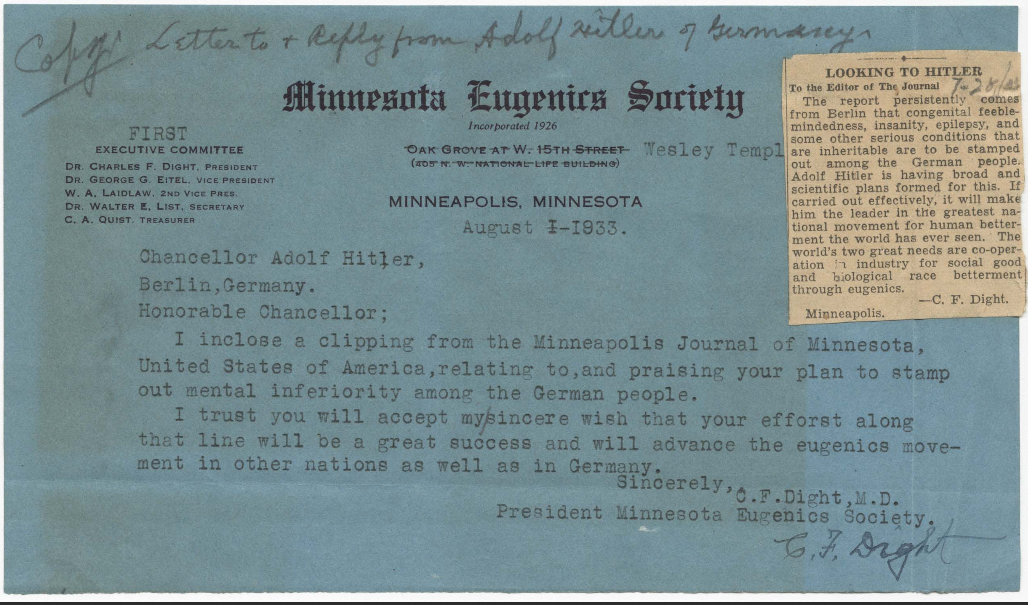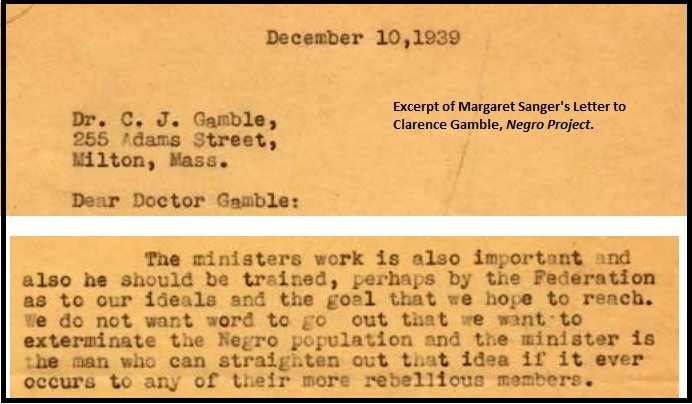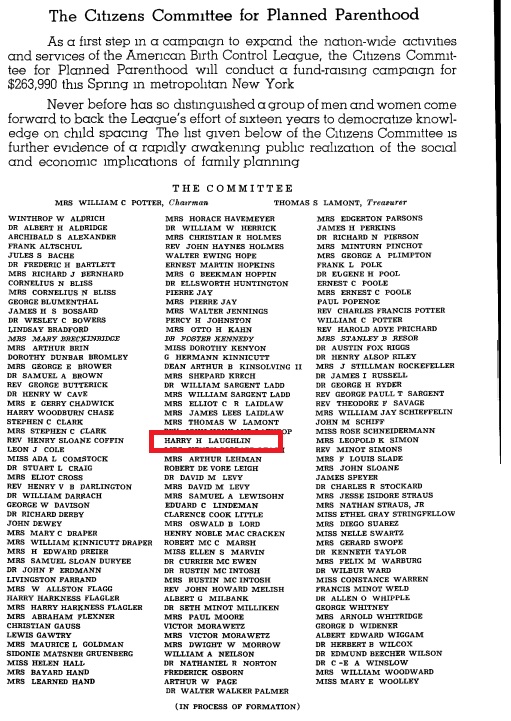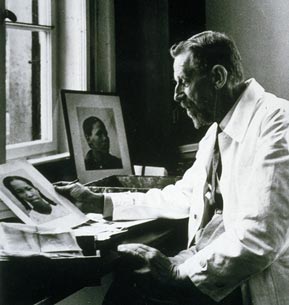Recent accusations of forced sterilizations have brought the United States’ dark history of eugenic, compulsory sterilization programs — which once targeted those deemed by elites as “unfit” — back into the spotlight.
The 1934 film, “Tomorrow’s Children,” portrayed a state’s coercive power to eugenically sterilize a young pregnant woman. While the woman portrayed in the film succeeded in stopping the state’s court order, actual eugenics programs within the United States resulted in the sterilization of an estimated 60,000 people — many minorities, who were eugenically sterilized against their wills. Many more have been subjected to these atrocities worldwide.
California’s eugenics: Coercive sterilization of over 20,000 people
In 1909, California passed the third sterilization bill in the U.S., which sanctioned the coercive sterilization of over 20,000 patients, noted an American Journal of Public Health report. According to author Edwin Black, “[T]he code permitted castration or sterilization of state convicts and the residents of California Home for the Care and Training of Feeble Minded Children in Sonoma County. Two institutional bureaucrats could recommend the procedure if they deemed it beneficial to a subject’s ‘physical, mental, or moral condition.'”
Eugene S. Gosney, founder and President of the Human Betterment Foundation (HBF), published a study with his associate Paul Popenoe entitled “Sterilization for Human Betterment,” focusing on sterilizations ordered under California’s law. In July 1931, Margaret Sanger published Gosney’s views on sterilization in her Birth Control Review. He wrote, “Eugenic sterilization is, under usual state laws, ordered or permitted by the state, for the benefit of the state…. Eugenic sterilization starts where contraception stops. It is applied primarily to people or families without the intelligence, emotional stability, or self-control to handle contraceptives successfully. It succeeds where contraception would fail.”
In 1932, according to the New York Times, Gosney’s group published a paper warning America of “race degeneration” unless it adopted “eugenic sterilization of the large numbers of the mentally defective.”
Iowa’s eugenics: Planned Parenthood desired ‘wider application’ of coercive sterilization
Iowa’s first sterilization law passed in 1911. According to researcher Amy Vogel, “In 1929 the Iowa General Assembly created a Board of Eugenics to investigate persons who were a ‘menace to society,’ so that such ‘degenerates’ could be sterilized. Between then and 1977, when the legislature voted unanimously to abolish the board, it authorized the sterilization of more than two thousand individuals, three-fourths of them women.”
“Although the Iowa law was intended to be voluntary, there were undoubtedly instances when patients felt they had little choice,” she wrote. “… In Iowa, as in other states, many sterilizations were probably conducted without the knowledge or approval of the Board of Eugenics, but the extent to which physicians acted independently is unknown.”
Planned Parenthood was a referral agency for Iowa’s sterilization board, according to a 1969 report published in the DesMoines Register. Iowa State’s Eugenics Board Chairman Dr. S.M. Korson admitted a percent of their referrals came from the welfare office or Planned Parenthood.
When Korson noted a decrease in sterilizations due to a “more humane and enlightened attitude,” Rev. Robert L. Webber — the executive director of Planned Parenthood of Iowa — attacked board members, saying they “should reinterpret the law and give it wider application than they do now or they should quit.”
Minnesota’s eugenics: Wishing Hitler success
In 1925, Minnesota passed legislation allowing the sterilization of “feeble-minded” and “insane” residents of state institutions, according to the Minnesota History Center. Charles E. Dight, who was “largely responsible” for Minnesota’s Sterilization Law, also reportedly “fought unsuccessfully for expansion of the law to include sterilization of the ‘unfit’ who lived outside of institutions.”
In the 1930s, Dight joined the Minnesota Birth Control League, the forerunner of Planned Parenthood of Minnesota. In 1933, as president of the Minnesota Eugenics Society, Dight wrote a letter to Adolf Hitler wishing him success in “stamping out mental inferiority among the German people,” noting the Nazi leader’s efforts would “advance the eugenics movement in other nations as well as in Germany.”
According to Minnesota Magazine, the state’s eugenics program authorized the sterilization of 2,350 people.

Charles F Dight letter to Hitler ( Image from document provided by the Minnesota Historical Society)
North Carolina’s eugenics: Black men, women, and “feeble-minded” targeted
The state of North Carolina sterilized about 7,600 people before it ended in 1974, according to the Winston-Salem Journal which exposed the program in an award-winning series, “Against Their Will.” That program targeted many Black men and women for forced sterilization. One of those women was Elaine Riddick, who became pregnant after rape at age 13.
Watch Riddick’s emotional story from the documentary film Maafa21 below:
A prominent supporter and staunch advocate of that eugenics program was Proctor and Gamble heir Clarence Gamble, who served as director of Margaret Sanger’s American Birth Control League board (as well as Planned Parenthood’s). It was to Gamble that Sanger penned her famous letter about her “Negro Project” to recruit Black ministers and physicians to further her eugenic agenda in the Black community.
“Gamble helped found the Human Betterment League of North Carolina in 1947 to promote eugenic sterilization,” reported the Winston-Salem Journal.
According to the documentary Maafa21, “In 1947, Gamble called for the expansion of North Carolina State’s sterilization program, saying that for every feeble minded person sterilized, 40 more were polluting and degrading the bloodlines of future generation with their defective genes.”

Excerpt: Margaret Sanger Letter to Clarence Gamble, Negro Project
Another coercive eugenic sterilization program in the state was headed by Wallace Kuralt, who served as Mecklenburg County’s welfare director from 1945 to 1972. A 2014 Slate article noted that Kuralt believed sterilization would save taxpayer funding by reducing poverty among the “low mentality-low income families, which tend to produce the largest number of children.”
Live Action News previously documented that Kuralt influenced the opening of Planned Parenthood’s first Charlotte clinic. In 1983, Planned Parenthood of Greater Charlotte awarded Kuralt the Margaret Sanger Award.
North Carolina later became the first state to offer any kind of restitution to sterilization victims.
Virginia’s eugenics: Over 8,000 sterilized
On March 20, 1924, the Virginia General Assembly passed “The Racial Integrity Act” overseen by eugenicist Walter Ashby Plecker. The Assembly also passed the state’s 1924 Sterilization Act, which became a model for other states, after the 1927 U.S. Supreme Court decision Buck v. Bell upheld it. The act was based on Model Law written by American Eugenics Society founder Harry Laughlin.
In 1933, Laughlin’s ideas were published by Margaret Sanger’s Birth Control Review, and in 1938 he became part of the Citizen’s Committee on Planned Parenthood. Laughlin was an unabashed Nazi sympathizer who, in 1936, “received an honorary degree from the Nazi-controlled University of Heidelberg as ‘a pioneer in the science of race cleansing,’” according to researcher Paul A. Lombardo.

Harry Laughlin author of Immigration Act signed Committee for Planned Parenthood
It is estimated that the State of Virginia sterilized more than 8,300 people.
Not all instances of eugenics were in America, but Americans were connected to efforts in Germany as well as Sweden:
Germany’s eugenics: Sanger’s cohorts praised Hitler, who sterilized hundreds of thousands
Another Nazi sympathizer who worked with Sanger was Eugen Fischer. In 1927, Fischer sat on Sanger’s World Population Conference committee and served on committees that planned the sterilization of Afro-German Blacks.
Fischer was in charge of the Kaiser Wilhelm Institute, where racist Nazi programs were developed. According to the DNA Learning Center at Cold Spring Harbor, the Rockefeller Foundation — which has long funded eugenics and abortion organizations including the Population Council — provided funds to construct the Kaiser Wilhelm Institute.
Fischer praised Hitler in a 1935 New York Times article, asking the World Population Congress to “Hail Fuehrer and Reich Chancellor Adolf Hitler.” According to the DNA Learning Center, “Hitler read Fischer’s textbook Principles of Human Heredity and Race Hygiene while in prison at Landsberg and used eugenical notions to support the ideal of a pure Aryan society in his manifesto, Mein Kampf… By the outbreak of the Second World War in 1939, an estimated 400,000 people had been sterilized.”

Eugen Fischer (Image: DNA Learning Center)
Another Sanger cohort, Lothrop Stoddard, traveled to Germany to observe a Nazi eugenics court.
Stoddard was a journalist and Exalted Cyclops of the Massachusetts chapter of the Ku Klux Klan. He served on Sanger’s National Council, her ABCL Board of Directors, and the conference committee of the First American Birth Control Conference.
Stoddard described this Nazi meeting in his book, “Into the Darkness: A Sympathetic Report from Hitler’s Wartime Reich.”
“The first case I saw looked like an excellent candidate for sterilization. A man in his mid-thirties, he was rather ape-like in appearance–receding forehead, flat nose with flaring nostrils, thick lips, and heavy prognathous jaw. Not vicious-looking, but gross and rather dull,” Stoddard wrote in part.
Sweden’s eugenics: Sterilization in the name of a ‘progressive, enlightened welfare state’
“From 1934 to 1974, 62,000 Swedes were sterilized as part of a national program grounded in the science of racial biology and carried out by officials who believed they were helping to build a progressive, enlightened welfare state,” wrote the Washington Post in 1997.
“No one can document with certainty how many of these sterilizations were involuntary, but those who have looked at the program believe that, at its peak, a sizable majority were forced… In some cases, couples judged to be inferior parents were sterilized, as were their children when they became teenagers,” they added.
The program was strongly supported by Gunnar and Alva Myrdal, the paper noted. Gunnar authored the 1500-page book, “An American Dilemma: the Negro Problem and Modern Democracy,” paid for by the eugenics-founded Carnegie Corporation. His wife Alva was published in Margaret Sanger’s Birth Control Review and was later honored by Planned Parenthood.
“Like” Live Action News on Facebook for more pro-life news and commentary!







